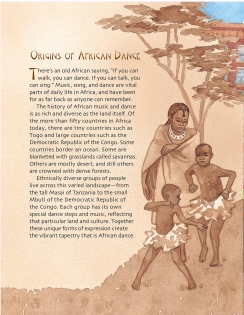 Jill Eisenberg, our Resident Literacy Expert, began her career teaching English as a Foreign Language to second through sixth graders in Yilan, Taiwan as a Fulbright Fellow. She went on to become a literacy teacher for third grade in San Jose, CA as a Teach for America corps member. She is certified in Project Glad instruction to promote English language acquisition and academic achievement. In her column she offers teaching and literacy tips for educators.
Jill Eisenberg, our Resident Literacy Expert, began her career teaching English as a Foreign Language to second through sixth graders in Yilan, Taiwan as a Fulbright Fellow. She went on to become a literacy teacher for third grade in San Jose, CA as a Teach for America corps member. She is certified in Project Glad instruction to promote English language acquisition and academic achievement. In her column she offers teaching and literacy tips for educators.
As I mentioned last week, the U.S. Department of Education’s Institute of Education Science (IES) and What Works Clearinghouse (WWC) released the latest educator’s guide to present best instructional practices for English Language Learners.
Let’s take a look at the guide’s first recommendation: Teach a set of academic vocabulary words intensively across several days using a variety of instructional activities.
Here is an example of how to apply the first recommendation using IES’s process and Lee & Low Books’ informational nonfiction text, Drumbeat In Our Feet.
- Choose a text:
IES: “Choose a text that is brief, interesting, and engaging for the students; contains a variety of target academic words to focus on; connects to a given unit of study and builds the students’ knowledge of a topic; provides sufficient detail and examples for students to be able to comprehend the passage; and contains ideas that can be discussed from a variety of perspectives.” (P. 14)
Lee & Low: Based on these criteria, I selected the first chapter, “Origins of African Dance.” The reading level of Drumbeat In Our Feet is best suited for fourth through sixth graders. The topic of dance history is relatable and relevant to this age group. It will spark student interest and engagement and promote discussion. The short excerpt is an appropriate length that can be read within one class period and is worth multiple re-readings over the coming days.
- Select vocabulary:
IES: Select a small number of academic vocabulary words (content-specific and general academic) for multi-day instruction. For in-depth exploration, consider only 5-8 words. The IES suggests choosing words “central to understanding the text, frequently used in the text, might appear in other content areas, with multiple meanings, with affixes, or cross-language potential.” (P. 16-17)
Lee & Low: Based on these criteria, I picked: origins, vital, ethnically, diverse, unique, vibrant and varied from the “Origins of African Dance” excerpt in Drumbeat In Our Feet. These words are key to understanding the text, will appear in other content areas students will explore, and several have multiple meanings.
In Our Feet. These words are key to understanding the text, will appear in other content areas students will explore, and several have multiple meanings.
Additionally, I used Flocabulary’s Wordlists to check my words against their grade level recommendations because Flocabulary’s researchers analyze grade level materials and high stakes tests to determine what academic words students should know in each grade. Origins is on the third grade word list and variety (related word form to varied) is on the fourth grade word list. Vital, diversity (related word form to diverse), unique, and vibrant are on the sixth grade word list. However, there are quite a few wordlists available to do this verification so utilize what your district/school recommends or another you have confidence using.
Next week, we will take a look at how to introduce and teach the selected vocabulary across multiple lesson periods using Drumbeat In Our Feet followed by writing and speaking/listening activities for your students to grasp the words’ meanings.
Further reading on supporting English Language Learners in the classroom:
- Strategies for Teaching English Language Learners in Elementary and Middle School
- ¡Colorín Colorado! resources on Academic Language for English Language Learners
- Drumbeat In Our Feet also has a BookTalk with creators Patricia Keeler and Julio Leitão
Filed under: Curriculum Corner Tagged: CCSS, close reading, common core standards, ELA common core standards, elementary school, ell, English Language Learners, informational nonfiction, middle school, reading comprehension, vocabulary



